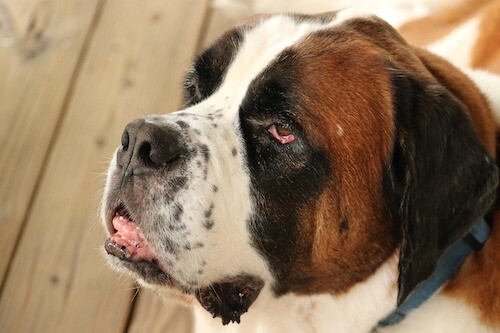Cancer is a devastating condition that affects millions of people each year. Unfortunately, it can also affect our beloved canine companions. Recent research indicates that cancer rates in dogs are on the rise, with one in four dogs developing some form of cancer during their lifetime. This growing trend has led to increased awareness and concern among pet owners who want to ensure the health and wellbeing of their furry family members.
The types of cancers seen most frequently in dogs vary depending on breed and age, with bone cancer being particularly common in large-breed dogs while lymphoma is more commonly found in small-breed dogs over 10 years old. Other forms of cancer such as mast cell tumors or melanomas may also be diagnosed at any age or breed type. Certain breeds have been found to have higher incidences of specific cancers due to genetic predispositions passed down through generations of selective breeding.
Regardless of the specific diagnosis, early detection is key for providing effective treatment options for pets battling this serious illness. Pet owners should be vigilant in monitoring their dog’s health and behavior, looking out for any unusual lumps, bumps, or changes in appetite, energy level or bathroom habits that could be early warning signs of cancer. Regular check-ups with a veterinarian are also critical for catching cancer in its earliest, most treatable stages.
Here are The 15 Dog Breeds With The Highest Cancer Rates. While all dogs have some level of cancer risk, understanding which breeds are predisposed can help owners take proactive steps in prevention and early detection. With greater awareness, more research funding, and advances in veterinary oncology, there is hope that cancer rates in dogs can start to decline in the years ahead. In the meantime, extra TLC and attentiveness to your canine companion’s health is the best medicine.
15Saint Bernards

Recent studies have shown that cancer rates in Saint Bernards are on the rise, and this is a cause for concern. This breed of dog has long been known to be prone to certain types of cancers, but the increase in cases over recent years has sparked alarm among veterinarians and pet owners alike. Saint Bernards have been found to have higher than average incidences of osteosarcoma (bone cancer), lymphoma, and various carcinomas.
The reasons behind the rising incidence of cancer in Saint Bernards remain unclear, though some theories suggest that environmental factors may play a role. Exposure to certain lawn chemicals, pesticides, and household toxins have been linked to increased cancer risk in dogs overall. Obesity, which is common in the large breed Saint Bernard, is another potential contributing factor. Whatever the underlying causes may be, it is clear that more research needs to be done into this issue so as to better understand why these dogs are at such high risk for developing tumors and other forms of cancer.
One possible explanation for why Saint Bernards are particularly vulnerable to cancer could lie with their genetics. This breed is bred from two lines which were closely related; one line was descended from mastiffs while another line was descended from Great Danes. As both breeds carry certain genetic predispositions towards various diseases and disorders due to their close relationship, it stands to reason that these inherited traits would also manifest themselves in Saint Bernard puppies as they mature into adulthood. Furthermore, since many common cancers occur when genes mutate or become damaged during cell division processes, the large size of Saint Bernards means their cells undergo more divisions over their lifespan, potentially increasing the chances of cancer-causing mutations arising.
Careful breeding practices avoiding the mating of dogs with shared lineage or histories of cancer in the family, along with further study into the Saint Bernard genome and environmental risk factors, will be important for reversing the concerning trend of high cancer rates in this majestic breed. In the meantime, owners of Saint Bernards should be extra vigilant with preventive care, screening, and attention to diet, exercise and chemical exposures around the home. With a combination of nature and nurture, the odds can be improved for the future health of the Saint Bernard.

